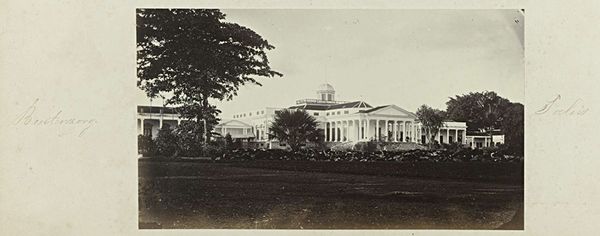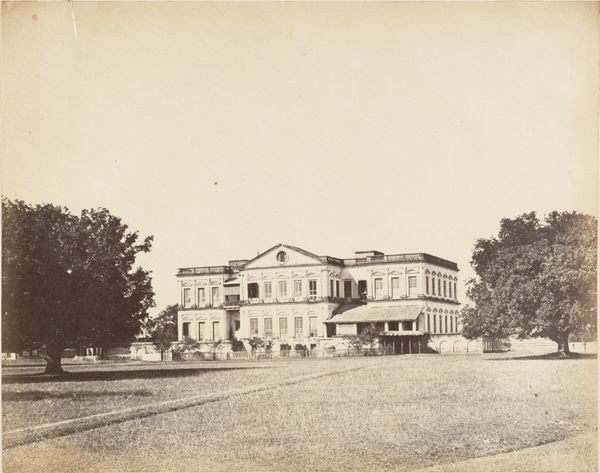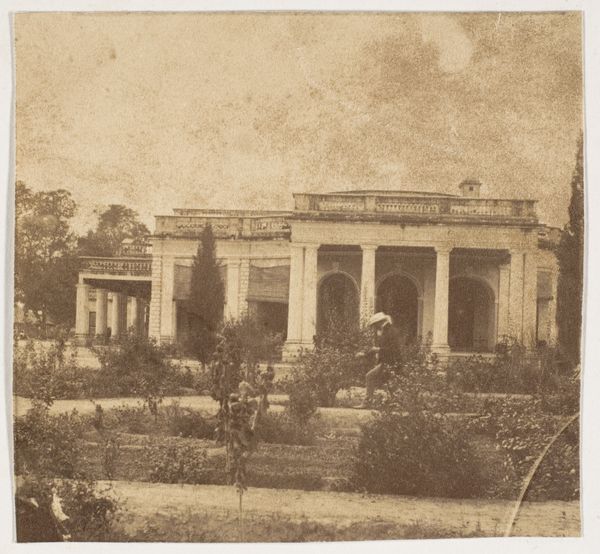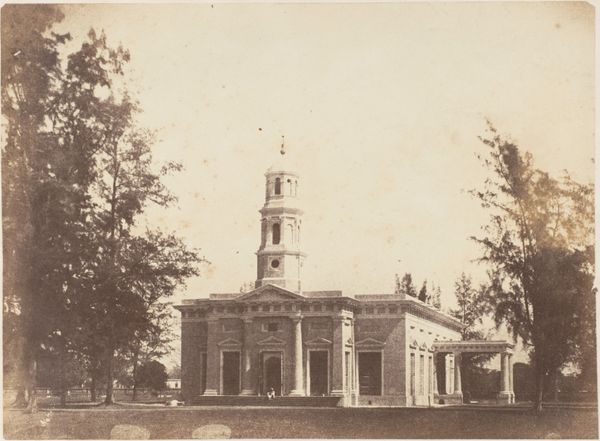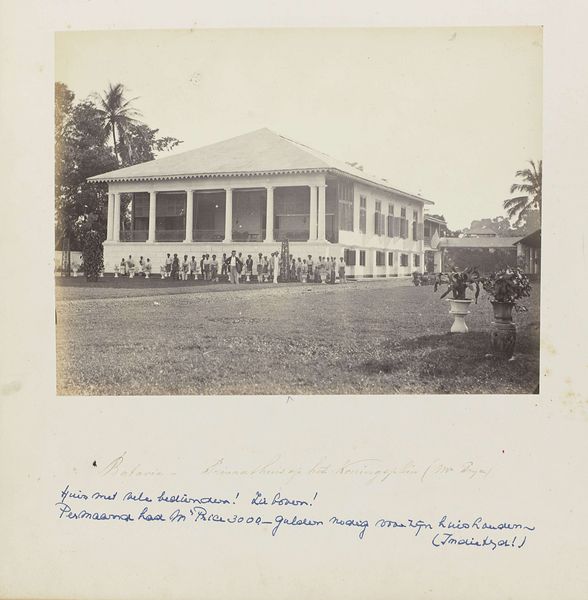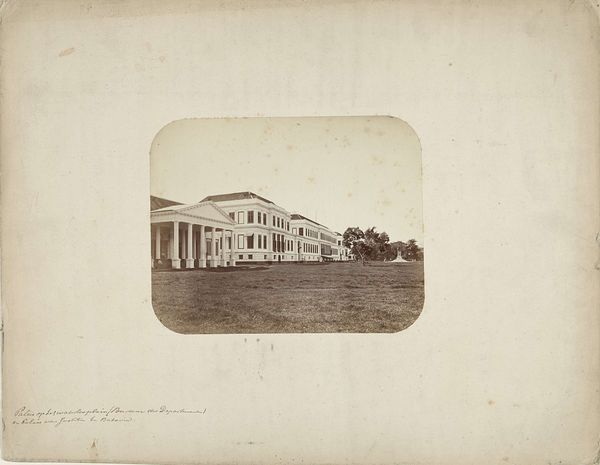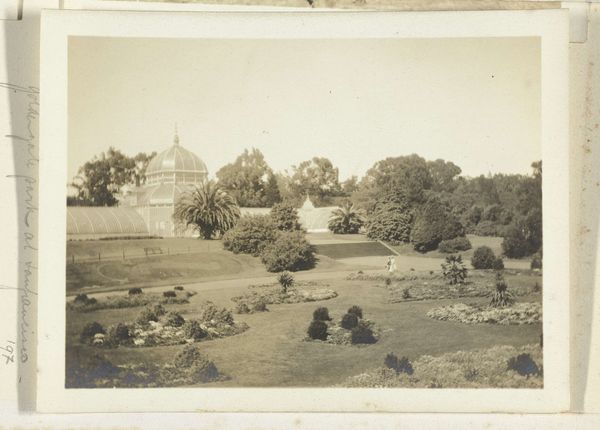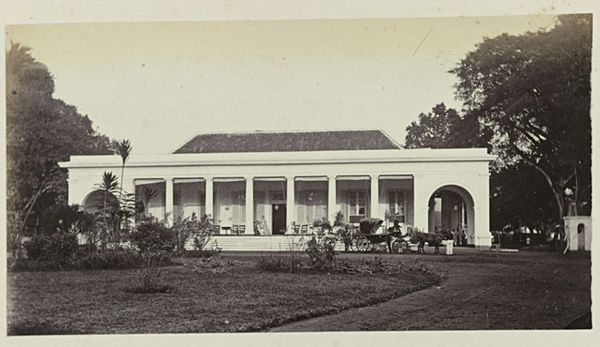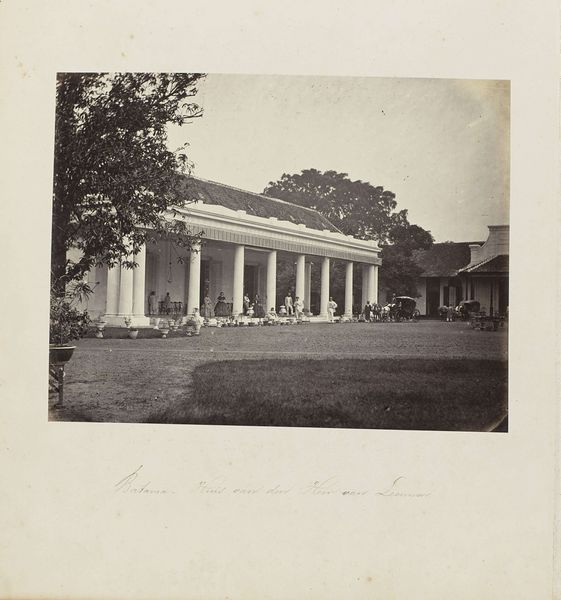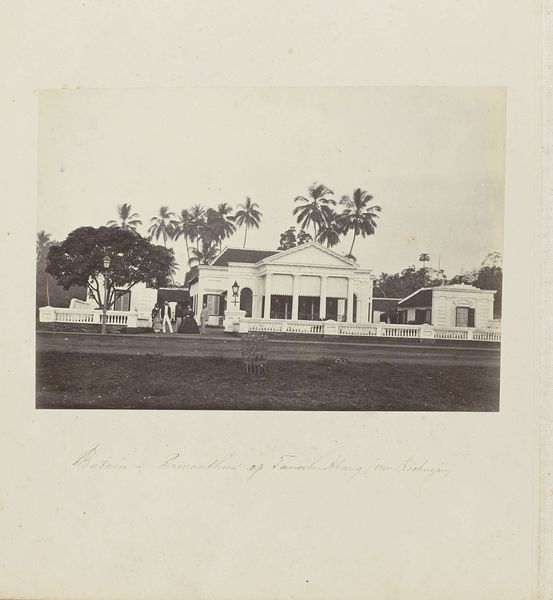
photography, architecture
#
neoclassicism
#
photography
#
historical photography
#
architectural drawing
#
cityscape
#
architecture
Dimensions: height 185 mm, width 240 mm
Copyright: Rijks Museum: Open Domain
Curator: It's quite striking, isn't it? So rigidly imposing amidst that landscape. Editor: Absolutely. This sepia tone really sets the scene, conveying an air of faded grandeur. Curator: What we're looking at is a photograph from sometime between 1863 and 1869, taken by Woodbury & Page. It’s titled “Buitenzorg - Paleis van den Gouverneur-Generaal.” Editor: The subject appears to be a classical building; the photographer chose a good angle to emphasize its stately proportions, a seemingly calculated attempt at grandeur that speaks volumes about the ambition of its builders. Look at the labor it must have taken to erect those pillars and the dome on top! Curator: Precisely! The image documents what was once the official residence of the Governor-General of the Dutch East Indies, now Indonesia. That building embodies Dutch colonial power structures manifested architecturally. Its design signals an intention to dominate the landscape visually. Editor: Consider the colonial context—photography itself, the materials, the labour involved. It all becomes a part of this apparatus designed to represent colonial authority and Dutch Imperialism. And I'm interested in the dissemination of these images as tokens of colonial triumph back in the metropole, shaping perceptions and justifying actions. Curator: And let's not forget the neoclassical architecture, an aesthetic favored by colonial powers because it echoed ideas of 'civilization'. We can ponder the act of image-making during this colonial period; whose stories are told and whose are left out? How this building projects the intentions and aspirations of a political system. Editor: True, photography, in that sense, became a potent instrument of power. So, examining it today requires that we think critically about those earlier agendas and narratives of colonialism and exploitation of labor. Curator: Yes. To understand its place in the narrative, its contribution, and even now its legacy, means critically questioning and appreciating that history and what that building really represents beyond just some old neoclassical photograph. Editor: Absolutely; it compels us to look closer, past the grandeur, to question its meaning within that socio-political structure.
Comments
No comments
Be the first to comment and join the conversation on the ultimate creative platform.
